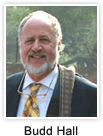 Which Side Are You On is the title of an iconic song of social struggle written by Florence Reece about the Harlan County miner’s strike in mountains of the Eastern USA in the 1930s. Florence was the wife of one of the union organisers. In that song she says, “They say in Harlan Country, there are no neutrals there, you either are a union man or a thug for J.H. Blair….Which side are you on?” It was the song that we chose as our theme song when we created the participatory research group at the University of Toronto in the 1970s and shared throughout the International Participatory Research Network that Rajesh Tandon and I were involved with in the 1970s and 80s. We modified the lyrics to “They say in academia there are no neutrals there. You either work for the status quo or work for social change. Which side are you on?”
Which Side Are You On is the title of an iconic song of social struggle written by Florence Reece about the Harlan County miner’s strike in mountains of the Eastern USA in the 1930s. Florence was the wife of one of the union organisers. In that song she says, “They say in Harlan Country, there are no neutrals there, you either are a union man or a thug for J.H. Blair….Which side are you on?” It was the song that we chose as our theme song when we created the participatory research group at the University of Toronto in the 1970s and shared throughout the International Participatory Research Network that Rajesh Tandon and I were involved with in the 1970s and 80s. We modified the lyrics to “They say in academia there are no neutrals there. You either work for the status quo or work for social change. Which side are you on?”
Two recent events have brought back the power and the importance of those words and cause me to wonder what the clarity of that message means for our work in knowledge democracy and community based participatory research?
Several nights ago in our First People’s House at the university we had the book launch“Islands’ Spirit Rising” by Louise Takeda. It is about the 40 year struggle of the Haida First Nations who live in the Northern BC Islands of Haida Gwai over control of the land that their people have lived on for many thousands of years, but which was taken from them just 200 years ago by British Colonial occupation. The Haida have enjoyed considerable success of stopping the uncontrolled pillage of their land by logging companies and gaining rights to control large portions of their remote Island community. Among the speakers was GuuJaaw, the former Chief of the Haida Peoples who was involved in these struggles over many years who among other things said that a key to keeping the struggle going was to have fun in the fight. At the end of the presentation, a group of young persons from the Heiltsuk First Nations moved to the front of the room and announced that they had come at the request of the Heiltsuk Tribal Council to invite everyone present to a demonstration the next day to protest the Government of Canada’s decision to open up the Herring fishery against the advice of the Heiltsuk themselves who are concerned about long term sustainability.
Three lessons can be drawn from this event. First is power of community based participatory research when it is done with those at the heart of a political or social struggle. The fact that Louise Takeda, a UVic Doctoral student, carried out the work under the close scrutiny of the Haida First Nations provides visibility for the Haida lessons to those of us interested in activist scholarship. It strengthens the accuracy of the work and also provides a record of the stories for Haida and others who continue to live in these struggles in that place. A second lesson I am reminded of is the importance of creating ‘safe’ or ‘privileged’ spaces for people who have been historically or in other ways excluded from mainstream institutions. The First People’s House at the University of Victoria is a space controlled by our university’s Indigenous leadership and set aside for events organised by or with Indigenous students, staff and scholars and their allies. How can we create similar spaces for those engaged in other struggles? A third and perhaps the most powerful lesson is that the struggle for reconciliation of land rights between the original peoples of this part of the world and those who have come after is on-going, difficult, dangerous always in risk of backsliding against the forces of greed and white privilege.
The day after the presentation about the Haida situation, as a result of the admonition by the Heiltsuk delegation to come out to their demonstration and because several students in my Community Development through Activism course were playing leadership roles, I found myself on the picket line blocking shoppers from entering a super market owned by the person whose fishing boats were overfishing the herring of the north coast. Most people when they learned of the reason for the blockage responded generously. Two angry men literally fought their way through our blockade shouting abuse and flailing about until they got into the store. It brought back the words of the song in an embodied way, “Which Side Are You On?”
And I wonder what more it means for my work. What does it mean for our work?
Budd L Hall
April 1, 2015




